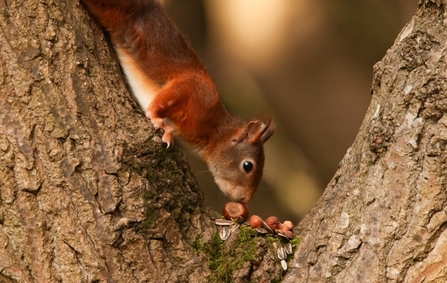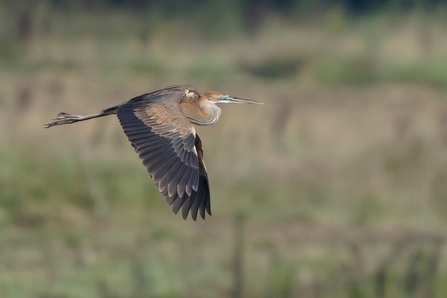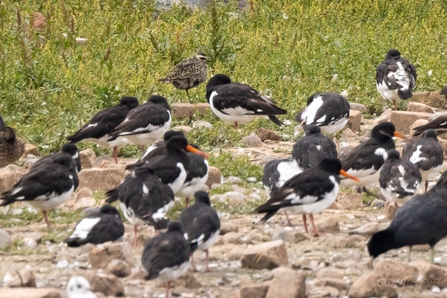September marked the season of change as we waved a fond farewell to the long days of summer and ushered autumn in.
As the leaves turn, winter migrants arrive and autumn fungi begin to take centre stage, you really never know what wildlife treats could be in store. It's a fantastic time to get out to one of our nature reserves, jumper on, and binoculars at the ready.
Let's take a closer look at some wildlife sightings from September.
Mere Sands Wood
With 42 hectares of lakes, mature woodland, wet meadows, and heath to explore, Mere Sands Wood is the place to be this autumn.
As the cold begins to nip at your fingertips, the leaves turn the colour of golden syrup and the mysterious fruiting bodies of fungi emerge. Over 200 different species of fungi have been identified at this reserve including fly agaric, pulled straight from a fairy-tale, and the outrageous stinkhorn.
But perhaps the most exciting species to have been spotted last month at Mere Sands Wood was a red squirrel.
This isn't the first time a red squirrel has been recorded at Mere Sands Wood; however, sightings here are few and far between and it's great news for our red squirrel conservation team, who have stepped up their monitoring of the site over the last year, and for the future of this endangered species.
The mature plantation of Scot's pine in the southeast corner of the reserve provides the perfect habitat for our native red squirrels and we hope that the small population here is able to strengthen and expand. Keep your eyes peeled and please let us know if you spot any signs of red squirrels during your visits to Mere Sands Wood.





